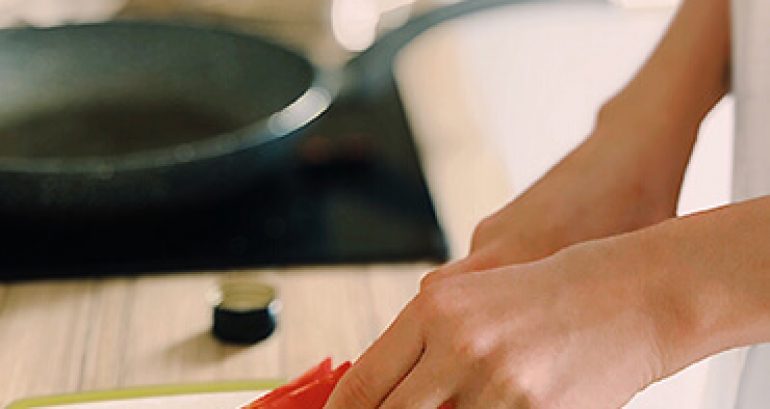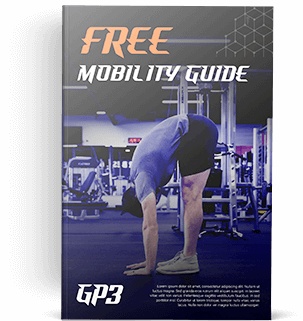Key Points:
1. Tracking your eating, movement, and self-care habits can be done instead of or alongside calorie counting. It will be much more effectively sustainable than calorie counting alone.
2. Building your “Nutrition Owner’s Manual” helps answer two crucial questions. “What should I eat?” and “When should I eat?” These are highly personal and unique to you.
3. The initial work it takes to build these tools to your exact specifications will pay off for the rest of your life.
Estimated reading time 4-8 minutes
Last week, I provided two tools for you to use in order to see the results you want and make them last. This can be done without counting calories, unless you really enjoy doing so. In that case, they can be used in tandem. Here are the tools:
The first is a spreadsheet divided into Nutrition, Movement, and Wellness sections. Essentially, you’ll be devising a list of behaviors that will lead to the results you want, and are realistic for you. You’ll then be tracking how often you do them.
The point is to shift you away from the “all or nothing” mindset that derails so many people, and towards an “always something” mindset. These behaviors will be placed on a scale of 1-7, ranging from “no-brainer easy” to “this was an uncommonly good day that I’m not going to try to replicate all the time.”
I feel quite strongly about this sliding scale, because most people attempt nutrition-based change in the form of short “sprints” where they change way too many things at once. Or, they wait for an unrealistically favorable set of circumstances that won’t last. The point is, they only learn how to make change in a way that doesn’t reflect their typical day-to-day lives, even though their day-to-day lives are the norm!
Shouldn’t we learn how to make change when things aren’t perfect?
Yes, because let’s be honest here. Things are rarely to never going to be perfect. Justifications like, “I’ll start when things settle down a bit at work,” or “I’ll get back on track when the kids are back in school,” betray a belief that things must be perfect in order to start making change. As a result, no changes are even attempted.
We’re going to listen to Voltaire, who said,
“The perfect is the enemy of the good.”
This is incredibly applicable to fat loss or any nutrition-dependent change. If you grit your way through a miserable six weeks without alcohol, sweets, and restaurant meals, but you enjoy alcohol, sweets, and restaurant meals and don’t plan to live without them forever, what have you really accomplished?
This may sound harsh, but all you’ve honed is your ability to suffer. Now, that can come in handy sometimes, but you haven’t built the skills or learned anything that you’ll need in your day-to-day life. Right? Even worse, you might start to feel guilty once you go back to enjoying the aforementioned treats, and guilt has derailed many a person’s nutrition goals.
That’s where the beauty of the sliding scale comes in.
Perhaps while trying to lose body fat, you consistently aim to get 5’s, 6’s, and some 7’s in all three categories (Nutrition, Movement, and Wellness).
When trying to maintain your weight, you might aim for 3’s, 4’s, and 5’s.
When you’re on vacation, traveling for work, or have a day where you’re just overwhelmed by whatever life’s thrown at you, you can at least aim for 1’s and 2’s so that you’ve done something.
Crucially, all of these numbers should make sense for you, personally.
For example, my tabs feature the following:
- Eating 150+ grams of protein to get a 4 in Nutrition
- Taking the stairs rather than the elevator to get a 1 in Movement
- Meditating twice during the day to get a 6 in Wellness
Some, all, or none of these may make sense for you. Luckily, you’re able to choose and change them over time!
Start building your behavior list today:
Your Habits Tracker: Nutrition, Movement, & Wellness
Your Nutrition Owner’s Manual/Go-To Meals List
The second tool helps you answer two crucial questions:
- When should I eat?
- What should I eat?
The first item on the list asks you to pay attention to what times of day your body naturally feels hungry. I’ve seen many instances of people who eat when they’re not hungry simply because it was the societally expected thing to do.
Take breakfast, for example. It’s the “most important meal of the day,” right? Wrong.
Actually, it was a marketing slogan created in the 1800’s by Kellogg’s…a breakfast cereal company. And it worked brilliantly, given that if you ask the average person today, 150+ years later, which meal is most important, breakfast is by far the most common answer.
The point is, if you’re not hungry at 7 a.m., don’t eat. In most cases, calories eaten when you’re not hungry are essentially wasted. Of course there are exceptions, like if you know you’re going to have a hard workout in the morning and you want to have some fuel in your stomach. However, the human body can easily and with absolutely no long-term consequences go 24+ hours without any calories. So, if you don’t want to eat your first meal of the day until 10 a.m., don’t! Wait until you’re at least a little hungry.
In that same vein, if you always find yourself reaching for a mid-morning or mid-afternoon snack, try pushing your meals to 10 a.m. and 3 p.m. instead of 7 a.m. and 12 p.m. Then, just observe how you feel and how your body responds. This will also help you develop the crucial skill of mastering mild hunger.
Snacking when not hungry
Now, there are a couple other reasons you may find yourself feeling “snacky” in between meals. First, you may be stressed, bored, or dehydrated. That’s why another major section of the “Owner’s Manual” is designed to help increase your awareness of when these instances arise. It also suggests writing down different tactics you can use when those unpleasant feelings occur. And they will occur.
This is an important point. Lots of people blame themselves for “stress-eating” or “bored-eating,” but it’s a completely rational solution, in the moment. When faced with an uncomfortable or unpleasant feeling that we’re not currently prepared to just sit with, we think we need a way to replace it with a pleasurable feeling. Eating is the ultimate quick-fix. It perfectly accomplishes what we want it to do. It simply has other side effects that we don’t enjoy so much.
That’s why we need tactics other than eating that we can turn to when our trigger situations arise.
Are your meals satisfying?
Next, you may be snacking simply because your meals aren’t sufficiently satisfying. Recall from last week’s piece that when a meal is higher in protein, water content, fiber, and fat, it tends to keep you full for longer periods of time.
This is where your “Go-To Meals List” comes in handy. Pay attention to how long a meal keeps you full and satisfied after you’ve eaten it. Are you reaching for the chips two hours later, or are you easily able to go 4 or 5 hours without eating again? Meals that fall in the latter category are probably worth eating more often. Put simply, it’s harder to eat more calories than your body needs when you eat less often.
That’s why if anyone ever asks for simple, fat loss-focused nutrition advice, I tell them to try two things:
- Eat only meals, no snacks
- Drink only non-caloric beverages
These two things alone will make a massive difference, if your meals are satisfying.
You likely already eat a number of meals that keep you full for what you would consider “long enough,” you just haven’t written them down anywhere. And let’s think about this for a second.
If you had a list of 5-10 breakfasts, 5-10 lunches and dinners, 5-10 snacks, and 5-10 restaurant meals that all kept you full for a reasonable amount of time and you enjoyed eating them, your job would be 90% done. It would simply come down to eating only foods from that list until you reached your goals, rotating your selections enough that you didn’t become bored.
Then, to maintain your progress after reaching your goals, you’d simply modify your intake a bit. Maybe you’d move from two meals a day to three, or three meals and zero snacks to three meals and one snack. You wouldn’t need to change anything else. Nothing could be more sustainable!
Well worth the effort
I won’t lie to you, all of this will take work. It will require you to pay attention to your body, cues in your environment, and your responses to them. You’re probably used to ignoring or taking many of these things for granted, so at first it may feel foreign to focus on them.
However, the skills and self-knowledge you’ll gain from this will literally come in handy for your entire life. Start today, build your lists little by little, and I promise it’ll be worth it!
Before you go, I’d love to hear from you! What’s your experience like with habit tracking? Have you tried it? How did it work for you? Reply and let me know!

